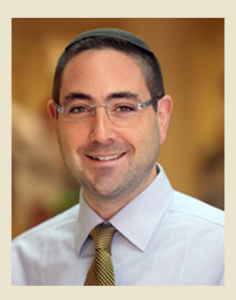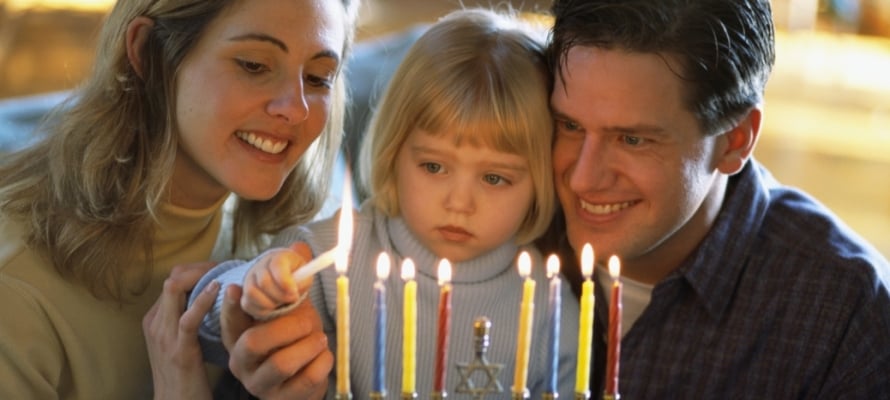
By Rabbi Ari Enkin, rabbinic director, United with Israel
In this article, Rabbi Ari Enkin explains the history and purpose of the ‘shamash’ – the extra Chanukah candle that is lined up separately from the other eight.
Before lighting the Chanukah candles, a preliminary candle is lit. This extra candle is used to light all the others on the Chanukah menorah.
Most people do not realize that this primary candle is not truly required, though its use has become nearly universal. This superfluous candle is affectionately known as the shamash (servant). Being that the shamash is not actually an obligatory component of the Chanukah candles, it is generally placed separately. Indeed, one may notice that Chanukah menorahs have a setting for the shamash either higher or lower than the rest of the candles or in a way that distinguishes it from the others, as we shall soon see in detail.
What is this shamash all about?
The Talmud teaches that the ideal place to light the Chanukah candles is actually outdoors. Indeed, this was the common practice for centuries. It was sadly noticed, however, that as times changed and anti-Semitism increased, the Chanukah candles, and the homes displaying them, were subject to frequent acts of vandalism. As such, people began lighting the menorah indoors, a custom that remains to this day in most of the world.
The switch to indoor lighting brought about a complication in Jewish law. Among the many specifications comprising the mitzvah (commandment) of Chanukah candles is the requirement that they not be used for any mundane purpose whatsoever. They are to serve no function other than to recall the miracles of Chanukah. As such, there was concern that in a dark room one might come to use the Chanukah candles for making reading easier or even for such mundane tasks as counting money or lighting a cigarette. An additional candle was therefore added so that in the event that light is needed for a mundane purpose, one could make use of the shamash and not violate the sanctity of the Chanukah candles.
Many in Israel Light Outdoors
It is interesting to note that in Babylon, the Chanukah lighting had always been conducted indoors due to the climate, and hence the practice of using a shamash may actually pre-date the Talmud. Indeed, it is proper for a person living in a place with a favorable climate in December and no fear of anti-Semites or vandals ruining the candles to light outdoors rather than using the living room window. This is the practice among many in Israel.
As mentioned, there are various approaches in distinguishing the shamash from the actual Chanukah candles. One is to use a wax candle for the shamash while using oil for the Chanukah lights. Another is to place the shamash lower than the other candles. Most rabbis, however, rule that the shamash should be higher. Finally, there is an opinion that one should make the shamash bigger than the other candles so that its light will be the brightest.
Although it is clear that the actual Chanukah candles possess much sanctity, is there any inherent holiness to the shamash? While we might instinctively think not, especially considering that it may be used for mundane purposes, some authorities rule that the shamash must not be used for anything truly demeaning. This teaches us that even the shamash is not just “any” light source, and it has a degree of holiness. We learn from here that anything that was even indirectly used in conjunction with a mitzvah or holy task must be treated with reverence.

Bring Joy to Israeli Soldiers - Send Winter Care Packages!
We are honored to thank the young men and women of the IDF who risk their lives every day to defend the citizens of Israel.
Join us in sending winter care packages and personal notes of support to Israeli soldiers who are out in the cold all day.
Warm up a soldier's heart with essential winter wear including fleece jackets, hats, gloves and more. Keep an entire unit warm!
THE SOLDIERS REALLY APPRECIATE YOUR LOVE AND CONCERN!
Click Here to Send Your Gift and Personal Note to Israeli Soldiers

